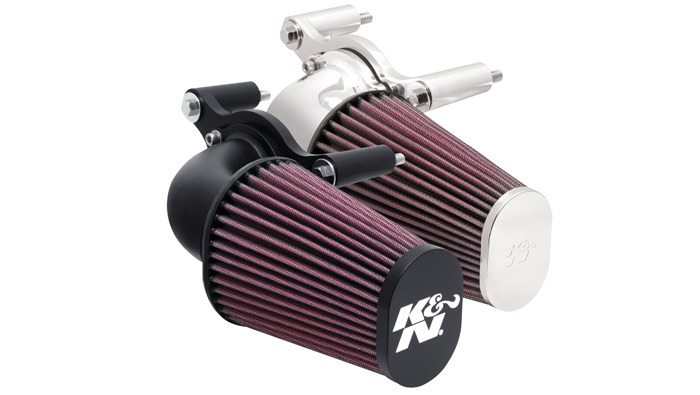
For decades, the first and foremost upgrade for performance freaks on their vehicle has been the replacement of stock air filter with the oiled one.
But, what’s the big deal about air flow? Just like us humans, the respiratory system is of prime importance for cars too. At its most basic level, an engine is an air pump. More air entering the engine increases the efficiency of the combustion process creating more horsepower and torque. Horsepower is a measure of the engine’s maximum power while torque measures how quickly you can accelerate.
The two major essentials for a car to run are fuel and air, and the importance of air (often overlooked by the average driver) is highlighted by the fact that a properly proportioned fuel charge is 14.7 parts air and one part of fuel. Ensuring clean and optimal air-flow to the engine is the air filter designed to deliver both high air intake and superior dirt protection.
The performance benefits of maximum airflow are clear, compelling and well documented. Although stock OEM (Original Equipment Manufacturer) paper air filter does the job well, there is still room for considerable improvement in your vehicle’s air-flow system. That’s where the oiled air filters step in, providing increased air-flow, while at the same providing better dirt protection. Though there are other names in the realm, the head of the pack is the American performance parts manufacturer, K&N.
K&N Engineering has been manufacturing performance air filters for over 30 years. The company uses an oil-impregnated, cotton-gauze filter element surrounded by a wire mesh. The cotton material lets air pass through it easily while trapping particles in the sticky, oil-covered fibres. The design is superior to a paper element as it allows for superior airflow while maintaining effective air filtration.
On average, the K&N replacement air filters are designed to provide up to a 4 per cent increase in horsepower and torque, though the amount of performance gain varies from vehicle to vehicle based on the overall factory air intake design. The greater the restriction created by the stock paper element, the greater the potential performance gain when you switch.
While the initial cost of a K&N filter could be higher than a standard OEM filter, but over the time K&N proves to be much more cost-effective with its 10-year/1.6 million km limited warranty, with 80,000km cleaning interval: made to last the lifetime of your vehicle. Compare this to the OEM air filters, required to be replaced every 15-20,000km.
Made for a wide range of vehicles, both two and four wheelers, the K&N filters are washable and reusable. They can be easily cleaned and oiled as many times as reasonably necessary, and perform to specification perfectly up to 100 washes.
The stock replacement K&N filters are designed to replace the originally installed air filter, and fit into the factory air box perfectly sealed with no air leakage. The filters are also emissions legal and do not void the manufacturer’s warranty (validation under process in Oman).
It is recommended to check the K&N filter every 50,000km, though under general driving conditions the filter will not require cleaning until 80,000km of continuous use. More frequent service may be necessary however, under extreme conditions such as off-road use where dusty conditions are prominent.
Even the least mechanically inclined individual can perform the periodic 80,000km service in less than an hour.
Here is how to do it:
1Tap the air filter gently against a hard surface to dislodge loose dirt. Always tap a filter on its base or side and never tape filter’s edges because this may damage the element. Follow this up by gently brushing the filter with a soft bristle brush. An old toothbrush will work well.
2. Use a good air filter cleaner (preferably K&N) in either spray-on or liquid form. If a spray is used, be sure to coat the entire element and allow it to soak for 10 minutes. Use the liquid form by filling a pan to a level where the filter element is submerged beneath the cleaner. If a large, round element is being cleaned, rotate it through the fluid and remove it. After submerging the filter element in the cleaner, remove the filter and allow it to soak for 10 minutes.
3Rinse the element with low-pressure water such as from a household faucet. Do not use high-pressure spray as this will damage the element. Always flush from the clean side to dirty. This works to remove dirt from the filter rather than driving it further into the filter.
4. Shake excess water from the filter and allow it to air dry at room temperature (hanging the filter in the outside air works well.) Do not use compressed air or a heat source to dry the filter as these will damage the element, rubber base, and end caps.
5. Re-oil the filter with genuine filter oil. Use only branded oil as cheap oils can degrade the filtering ability. The filter will not function properly without sufficient oil and will require more frequent re-oiling of the filter’s clean side in between cleanings.Spray K&N filter oil into the element’s pleats from a distance of 10 inches. Spray each section of pleats until the reddish oil colour becomes apparent. Let the filter sit for 10 minutes and spray again any areas that are still white. You can also apply the oil from a squeeze bottle onto each pleat.
6. Re-instal the filter into the filter housing. Make sure the filter sits properly in the filter housing. Instal the air-filter cover and tighten.
Though a premium air filter lookalike will provide increased airflow, you’ll still risk severely compromising on dirt protection, which is as critical to engine performance as air flow. A sincere piece of advice: avoid cheap copies and imitations for the best performance.